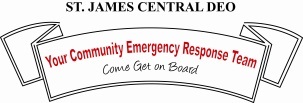Floods can occur at any time of the year, therefore we must move away from a growing mind set that the hazard is only prepared for during the wet or hurricane season.
Possible causes of floods in Barbados could be heavy or prolonged rainfall, burst mains, unusual sea swells or storm surge.
The potential for flood damage is particularly high where there is development on low lying flood prone lands. Each Barbadian household has a responsibility to protect its home and its family, by planning ahead, and by seeking out what risks are present, taking practical steps to prepare, therefore minimising the potential from flooding in our communities.
Before the Flood
 Have a thorough investigation of your property and the environment, and what possible risk of flooding exists.
Have a thorough investigation of your property and the environment, and what possible risk of flooding exists.
Identify drainage potential and devices which can be applied to your area or property. If you live in a two storey building, and the basement is a risk, be proactive by ensuring that adequate devices or processes are acquired or designed to reduce or minimise the potential flooding e.g. install sump pumps and directional flow valves in your basement.
Take the following precautionary steps:-
- Secure and pay special attention to electrical and gas equipment and supply.
- Move furniture, appliances and personal belongings to upper floors or to safe levels.
- Ensure your laundry and other toxic chemicals are stored away.
- Make sure your sewage system does not contaminate the area by flood water interacting with the system.
- The use of sand bags can minimise flooding at your location. Secure adequate supplies and have them readily available if necessary.
- Identify the safest evacuation routes.
If you have decided to remain at home, and you have taken appropriate precautionary steps to secure or safeguard your home, listen to the radio, make sure each family member is aware of your family preparedness plan, ensure you know the best evacuation route should you have to leave.
Always remember electricity and water or damp conditions can be lethal so never attempt to apply preventative measures in this area unless you consult qualified personnel in the field.
Determine where you will go if you have to leave, and have your important documents and other essentials stored safely in your water proof devices or bag.
During a Flood
 Take your emergency kit with you. Stick to known and safe evacuation routes. If you are driving or walking stay far from fast flowing or deep water. Always wear highly visible protective clothing. Look out for possible dangers until you are safe.
Take your emergency kit with you. Stick to known and safe evacuation routes. If you are driving or walking stay far from fast flowing or deep water. Always wear highly visible protective clothing. Look out for possible dangers until you are safe.
Flood waters sometimes contain contaminants so pay attention to your health and safety.
After the Flood
 Always use extreme caution when returning to your home after a flood. If your main electrical supply was not switched off prior to leaving, seek advice from a qualified person to ensure your home is safe. Ensure that dangerous debris and potential pollutants are avoided so as to prevent injury, sickness or infections occurring. Do not drink water until it is certified that it is safe.
Always use extreme caution when returning to your home after a flood. If your main electrical supply was not switched off prior to leaving, seek advice from a qualified person to ensure your home is safe. Ensure that dangerous debris and potential pollutants are avoided so as to prevent injury, sickness or infections occurring. Do not drink water until it is certified that it is safe.
Record and/or photograph the details of your flood damage, so that you can submit this information to your insurance agent. Before you start to restore your home, during your clean up and restoration process, pay great attention to wear protective clothing, and use safe practices. Ventilate and sanitize your home and carefully determine what you may salvage and discard damaged or contaminated items, especially food and medical supplies. Make sure you consult your insurance representative early and when the entire process is over, evaluate your family preparedness plan. Improve, modify the areas of the plan so that in the future you may be more resilient, should a flood re occur in your area.
